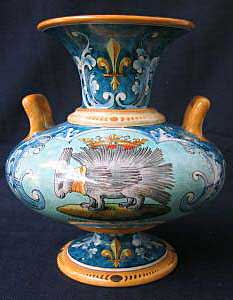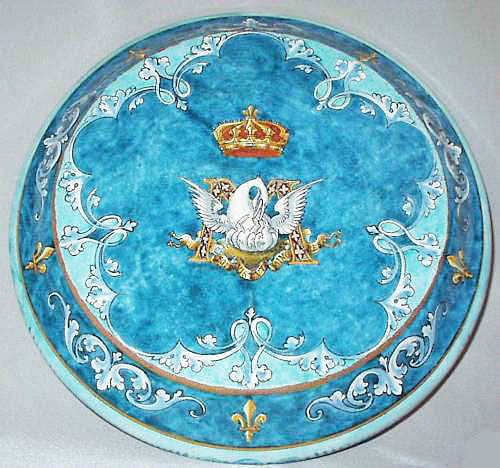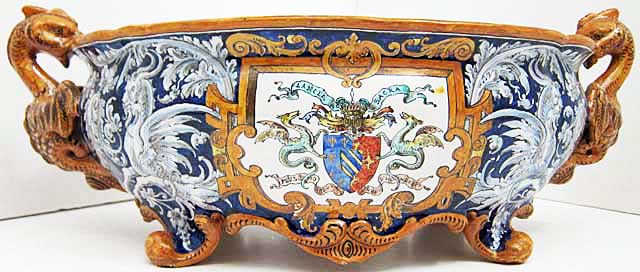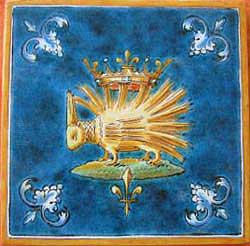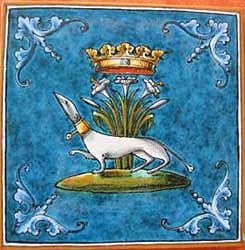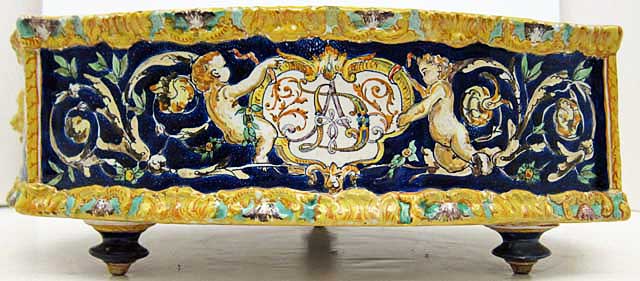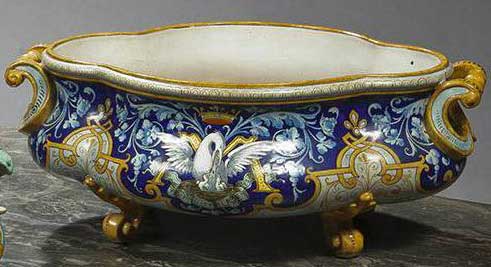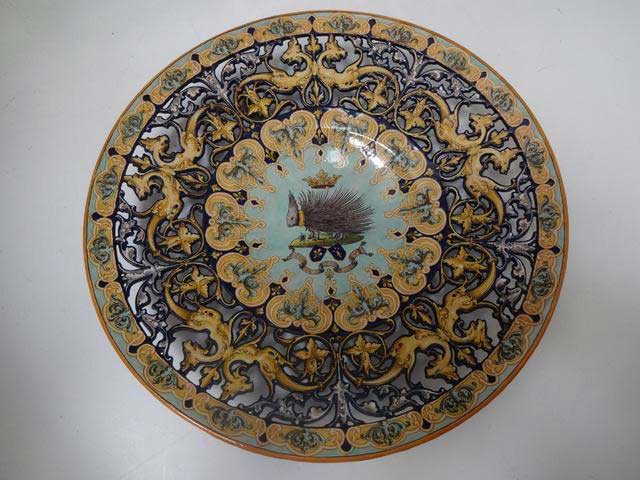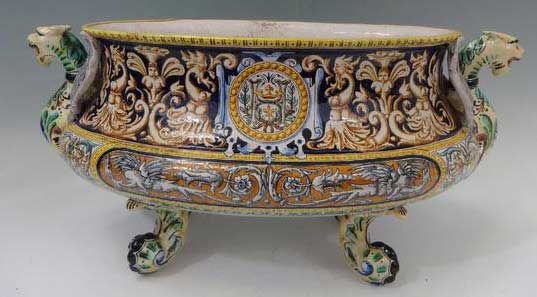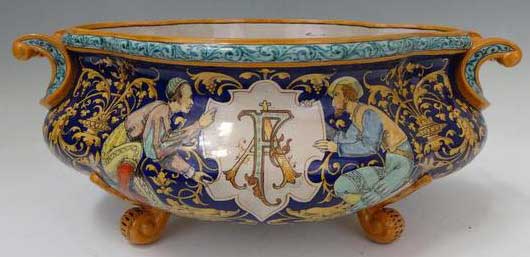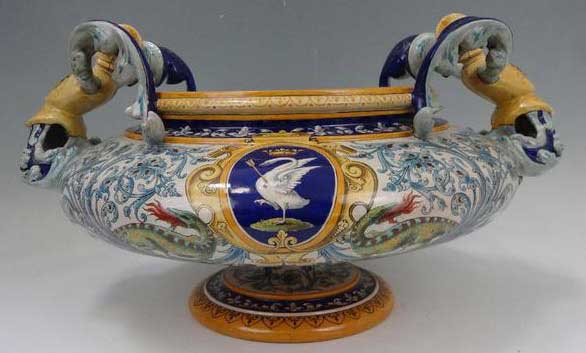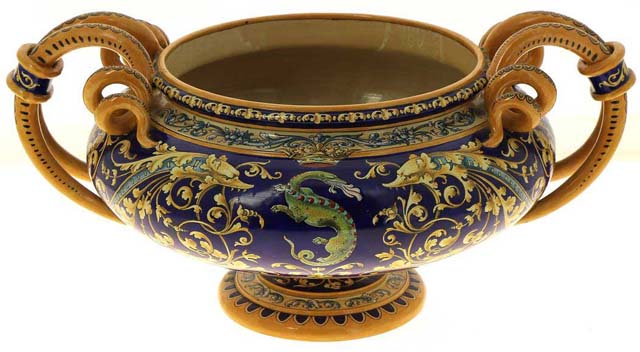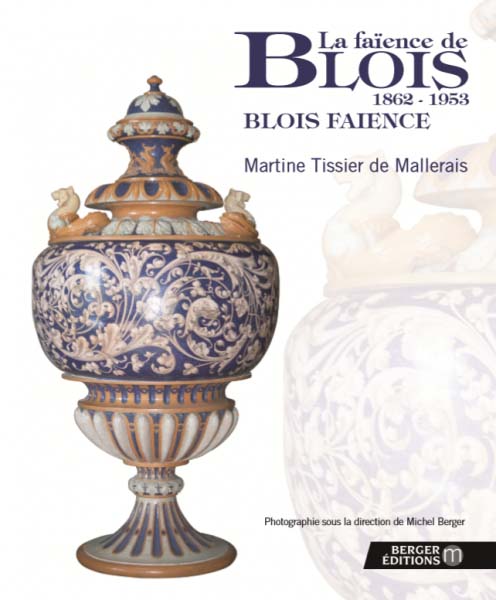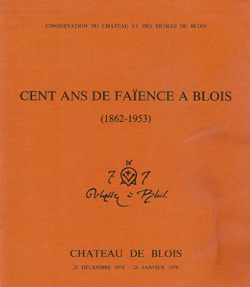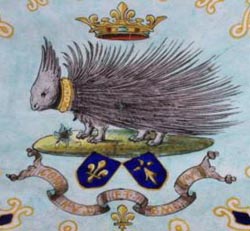
During our two-year sojourn in Paris, we often visited the Loire Valley and became especially interested in the Château at Blois, a royal residence and scene of numerous important events in French history. At the time of our first visit, we did not know about the ceramics works or faïencerie for which the city was famous. We were more focused on the furniture and the influence of Catherine de' Medici, Queen of France, who brought from Italy some of the gifted artisans who impacted French furniture design so heavily in the Renaissance.
We were captivated by the furniture, the history, and the décor in the Château, but especially in the Louis XII Wing where the porc-épic (which sounded to us as though people were saying "Porky Pig") or porcupine, with a crown atop its quills, was everywhere. A more charming bit of heraldry is difficult to imagine.
Symbol of King Louis XII, the porcupine epitomized power and ferocity in battle - able to hurl its quills and wound an enemy at a distance or stab selectively at close range. Throughout the Louis XII Wing of the Château there are porcs-épics everywhere - in stone carvings over doorways, in wooden mantels over fireplaces, in stained glass windows - depicted in various heraldic attitudes. Some are so highly stylized that the quills are squared off and the animal looks more like a small truck. Others show the quills poking through the crown while still others show the crown hovering over the animal's back. Several involve carefully arranged patterns of quills and a sort of pointed top knot. One even shows the porc-épic "guardant" or looking out at the viewer, in a clear Renaissance departure from traditional Gothic heraldic renderings in profile.
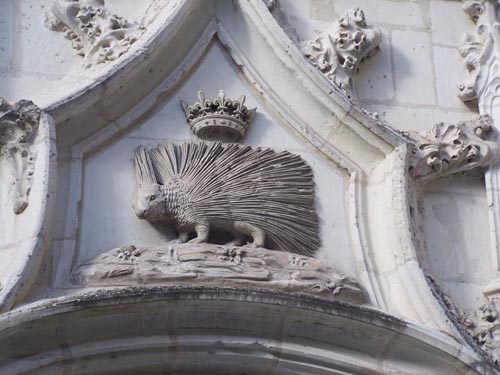
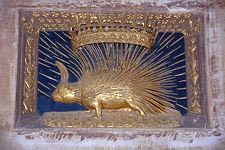

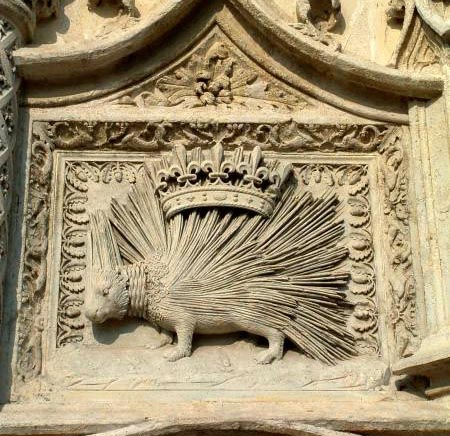
We were so taken with the porc-épic that it inspired us to adapt Texas' unofficial state mascot, the armadillo, and to crown it in a similar manner. Thus, the armadillo statant became the symbol of M. Markley Antiques and armadillos rampant were incorporated into our company's trademark.

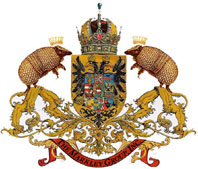
It was not until a subsequent antiques buying trip to France that the porc-épic captured our hearts in the form of ceramics from Blois. We were wandering the aisles at Chatou, a semi-annual antiques fair on the island in the Seine otherwise known as the Isle des Impressionistes. As we rounded a corner, there it was, amidst a stand filled with ceramics from Gien, Quimper, Nevers and other famous factories — a lone jardinière in a turquoise hue so different from the other items. In the center of the front was a porc-épic with a crown. Michael queried the dealer, who explained that it was from the faïencerie at Blois, whose output was very small, especially of pieces this large. For us, there was no leaving Chatou without it, and a new quest to learn all about Blois Faïence.
Finding out more about Blois Faïence has not been easy. Until 2017 there were no books with glossy color photos, no museum (although some items are in the collection of the Château at Blois), no websites. All we were able to track down was an article in the magazine L'Estampille from 1981 and a Catalogue from an exhibition at the Château in 1979. Fortunately, the back issue of L'Estampille is still available from the publisher but the Catalogue proved elusive. Both items were written by Mme Martine Tissier de Mallerais, while she was the Conservator of the Château and Museums of Blois. She wrote another book that appeared in 2017. It is a full-color edition (including text in English) published by Berger M. Editions but, regrettably, not available in the U.S.
In December of 2008 we had the honor of meeting Mme Tissier de Mallerais, who had retired from the Château but remains passionate about Blois ceramics and the artists who made them. She is a walking encyclopedia of all things Blois and dedicated to preserving and enhancing appreciation for the history and culture of this special corner of France. In her own words, translated from the French in the introduction to the 1979 Catalogue...
The "artistic ceramics of Blois," so renowned at the end of the 19th century throughout France and abroad, are now hardly known except by the residents of Blois.
Sadly, this observation still rings true although, thanks to the Internet, Blois Faïence has been reaching a wider audience and is gaining new adherents.
In September of 2012, Mme Tissier de Mallerais was awarded the Legion d'Honneur and congratulated at a reception in her honor at the Château.

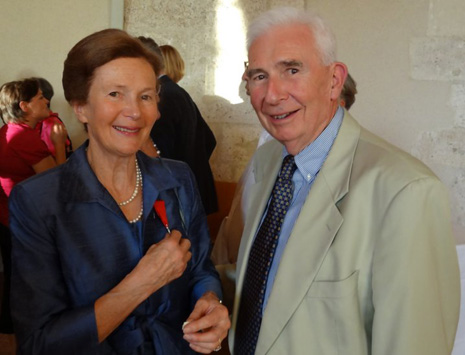
Mme Tissier de Mallerais is an inspiration to us. Seeking to preserve interest in the ceramics of Blois and to increase attention about the gifted artists who created them and lived and worked in this fascinating city, she is tireless in her efforts. We admire her dedication, her passion, her energy, and getting to know her has been a delight. We hope this web page devoted to Blois Faïence will help advance these efforts.
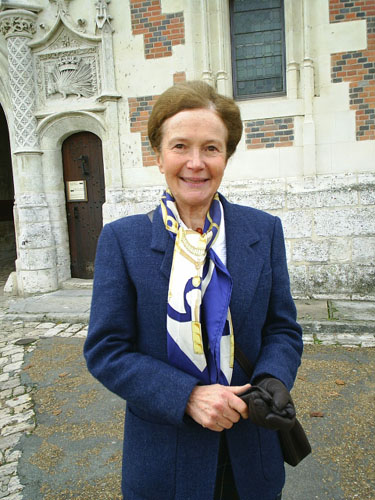
We are honored that Mme Tissier de Mallerais mentioned our enthusiasm for the ceramics of Blois in an interview posted on maville.com in June of 2009.
Although our own collection is small in comparison to the number of pieces we own from Gien, we treasure these examples of the artists Emile Balon and Josaphat Tortat and continue our mission to acquire pieces by Adrien Thibault and the incomparable Ulysse Besnard, who started it all.
What we have found most intriguing about the output of Blois faïencerie are the Renaissance-style items with classic design elements (masques, arabesques) and heraldic symbols of that period linked to the royal personages who lived at the Château such as Anne of Brittany (ermine), Louis XII (porcupine), François I (salamander), Claude de France (pierced swan). For more about the salamander, see item 5154, and for the ermine, see item 3091.
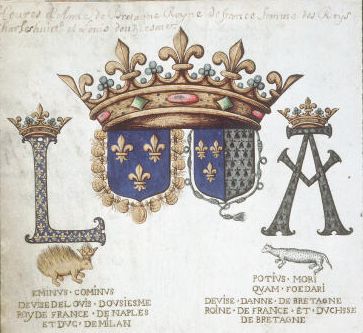
The following items are some of the ones currently found in our Château des Bois Collection:

